Which pipes to choose for heating: all the most important
In order not to spend extra money on repairing or replacing parts of the heating system, it is worth considering the selection of components very carefully. Often the question arises, what pipes to choose for heating, to forget about the problems for many years?
In order not to regret further, it is necessary to go to the hardware store in advance prepared. Today we will talk about which pipes are more efficient in most parameters.
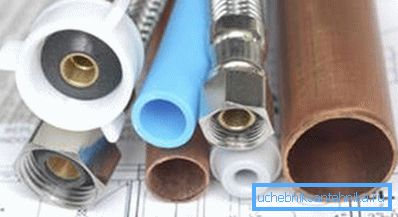
Steel Products
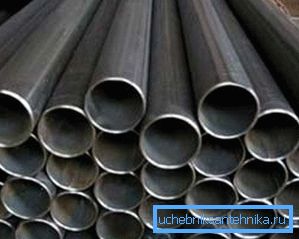
Having become customary from Soviet times, they still serve faithfully in many apartments. For another couple of decades, there was no alternative to iron products, and the buyer purchased only them. However, before choosing pipes for heating, still weigh all their pros and cons.
Material advantages
- Long service life.
- Steel perfectly tolerates mechanical impact, resistant to shock, high pressure.
- The low temperature coefficient of linear expansion allows you to successfully apply the material for the manufacture of hot water mains.
- Affordable product prices have a positive effect on popularity.
Product Disadvantages
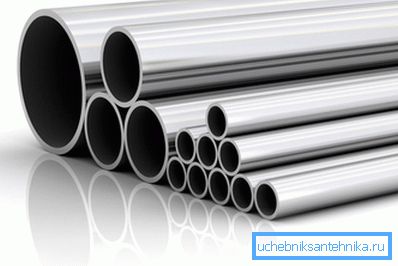
- Corrosion sooner or later causes the pipe to become unusable.. Rust corrodes the walls, leading to thinning and leaks.
Note! To avoid this problem, you can buy galvanized products or steel stainless steel analogues. True, such products are more expensive than ferrous metal counterparts.
- Frequent clogging. Moreover, the greater the build-up inside, the faster it retains particles that create a cork from debris and substances contained in the water.
- Good conductivity of stray currents contributes to the rapid formation of internal plaque.
- Rather difficult and expensive installation. You will have to use either welding or threading and use various couplings and adapters. Often the owner with his own hands to carry out the installation is not able to.
Pipes from metal-plastic
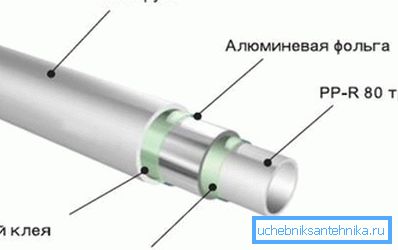
New-fashioned products, which justifiably became quite popular.
Today, the choice of pipes for heating is quite rich, but this material is still in the lead.
- Service life of 50 years or more.
- Do not rust and extremely slowly accumulate a raid inside.
- Although the inner layer is made of metal, the impermeability of the outer shell prevents the penetration of oxygen inside. Corrosion in this case is excluded.
- The ductility of pipes allows them to be used even in difficult accessible places with irregular geometry. When cornering, the instruction allows bending of the pipe without losing its characteristics.
- Lightweight simplifies transportation and installation. Installation is simple, as fittings or spikes are used.
- Heating does not affect the strength.
Cons of plastic
Before you decide how to choose pipes for heating, pay attention to the disadvantages, they are still present here.
- Direct sunlight material is contraindicated, ultraviolet will act destructively.
- The pipe is afraid of open fire and perceptible mechanical damage.
- Installation should be done carefully. When a pipe nut is clamped, a cut is likely to form and the pipe will rupture further.
- There are problems with fittings on the thread. Their inner diameter is smaller than the diameter of the pipes themselves, therefore, with poor water quality, the overgrowth of the inner surface of the connections is inevitable.
Types of connection of such networks
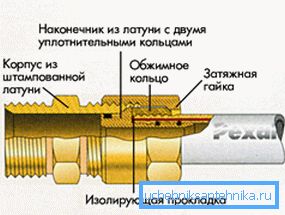
Segments can be joined by the following methods.
- Detachable connection (collet or threaded). This type can be repeatedly disassembled and assembled.
- Conventionally detachable conjugation (compression). With the intervention of the old crimp ring is changed to a new one. Therefore, it is not recommended to disassemble the connection unless absolutely necessary.
- One-piece connection (press fittings). Connect the segments forever, so this method is optimal for subsequent incorporation into the floor or wall.
Polypropylene analogues
It should be immediately noted that they are rarely used for heating. More for liner cold technical and drinking water. Since the pipe is able to withstand low (6/10 atmospheres) pressure and operating temperature +75 ?, it is advisable to use them for an individual system in a private house. To the question - which pipe for heating to choose, ordinary or reinforced, any expert will advise the latter with reinforcement.
Reinforced pipes and their advantages

Reinforced with reinforcement of foil or fiberglass, such a pipe can easily withstand a pressure of 25 atmospheres.
Therefore, before choosing plastic pipes for heating, be sure to ask the seller what characteristics are incorporated in the material.
- A quality product will last at least 50 years.
- The noise level is minimal, especially compared to metal counterparts.
- Corrosion to material is not terrible.
- Increased resistance to mechanical damage.
- Extremely easy installation using a special soldering iron.
- Metal parts will not rust due to an impermeable plastic layer.
- For ecological safety you can not worry.
- The pipe perfectly transfers temporary extensions. Frozen water will not break the plastic, stretchable material.
- The monolithic connection allows the finished highway to be embedded in the floors or walls without fear of leaks in the future.
- Both the pipes themselves and the connecting fittings are more than two times cheaper than metal-plastic ones.
The disadvantages of enhanced products
- Material fire hazard.
- Often there are defective lots from random manufacturers.
Note! The predominance of positive qualities is evident. But it is worth reminding once again that it is necessary to consider which pipe to choose for heating (reinforced), and which for cold water supply (normal).
Conclusion
Buy not only high-quality and reliable radiators, but also other communications, including pipes. By saving on small things, you risk replacing the entire system.
Today, the video gives recommendations on choosing the right pipes for heating.